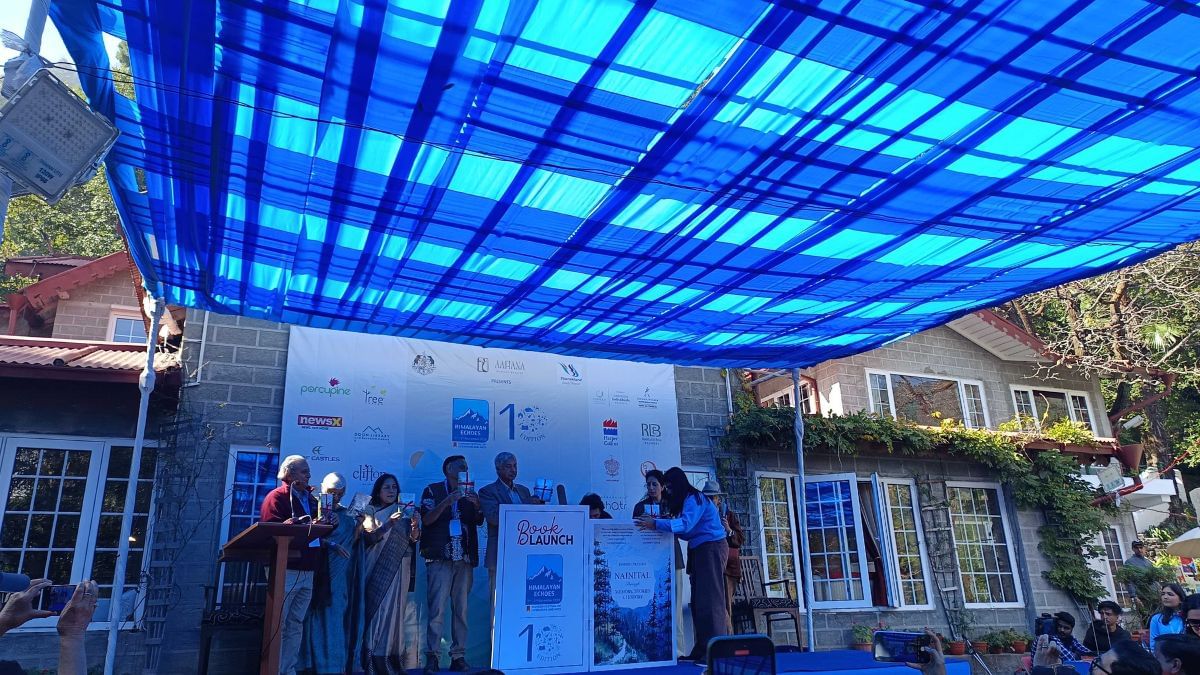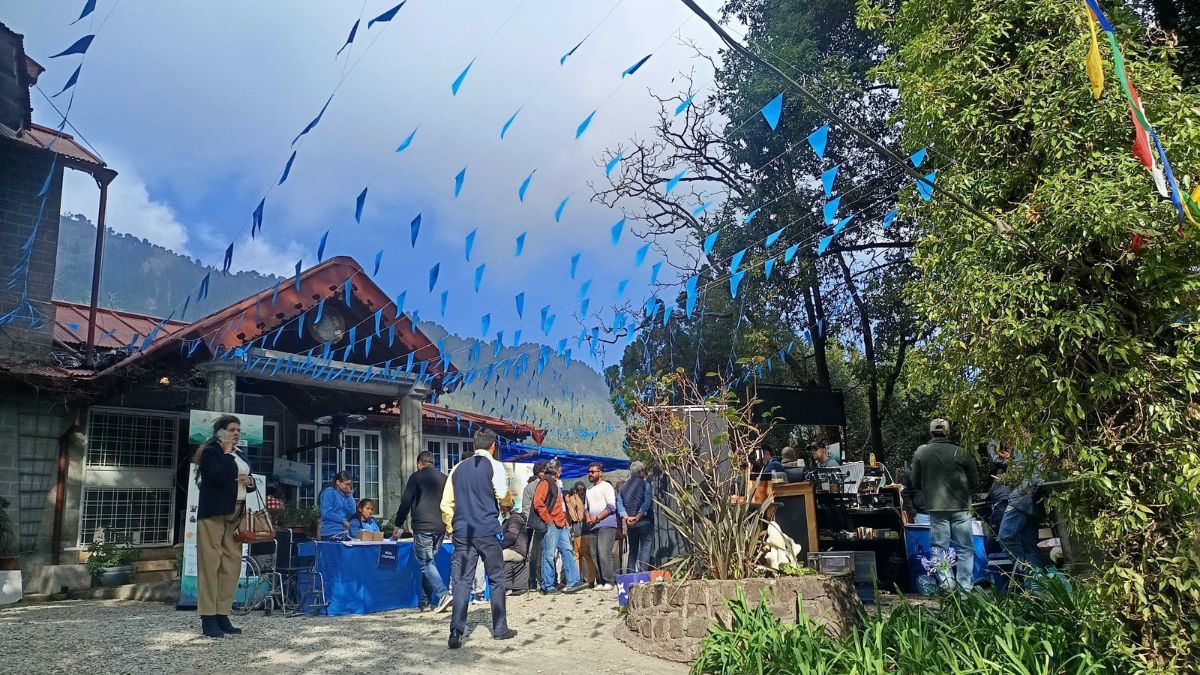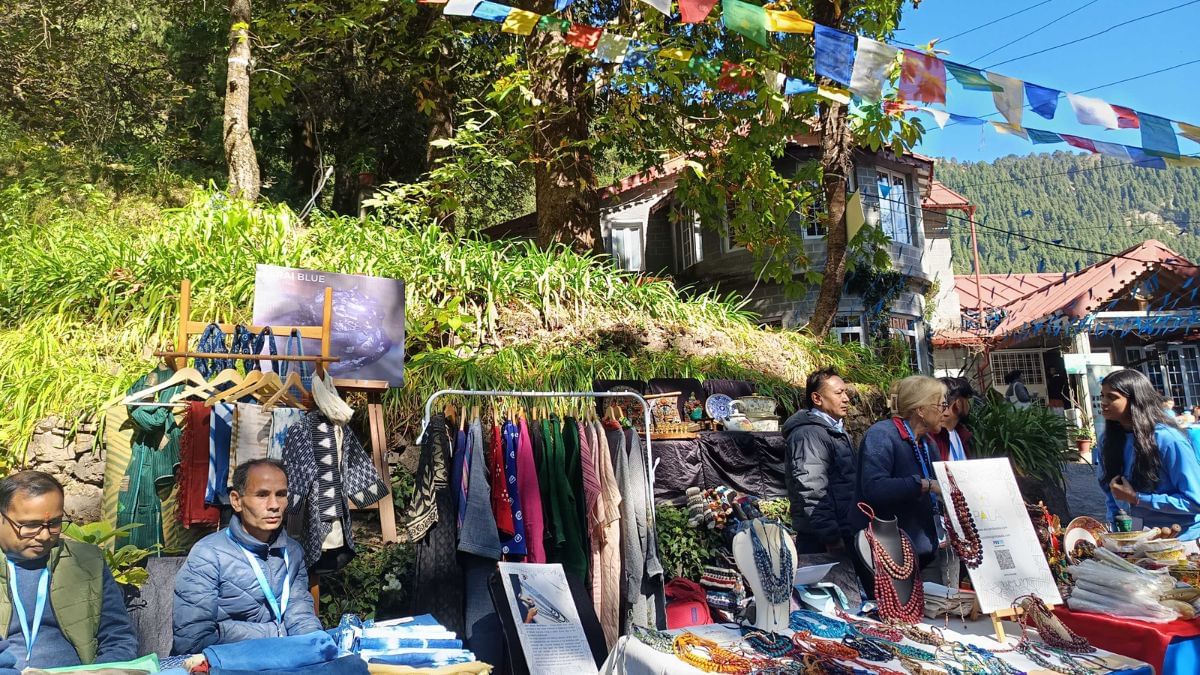Nainital: In the age when literature festivals rival the size of Kumbh Mela, with celebrity panels and luxury sponsors, Himalayan Echoes: Kumaon Festival of Literature and Arts has done something radical: It has refused to grow. For the last 10 years, it has stayed small by design—always hosted under the sloping roofs of Abbotsford Estate in Nainital. For its latest edition, the boutique festival turned its gaze to the mountains themselves, raising concerns about the changing climate that surrounds them.
The two-day event, held on 1 and 2 November, was all about celebrating the wonders of nature and what we stand to lose. Between the surprise unveiling of Anuradha Roy’s upcoming book, Called by the Hills, Bhutanese singer Leki Tshewang’s Himalayan melodies and a fashion show spotlighting Kumaoni weaving, the mountains never left the stage.
The nature niche is the reason why Himalayan Echoes has stayed small in size.
“We’re overwhelmed by the interest the festival receives, but we can’t accommodate everyone. The art and literature featured here must have some connection to the hills and the environment. That’s the only filter we use,” said Janhavi Prasada, who founded the festival a decade ago with Namita Gokhale.

This year’s list of 25 speakers included authors Stephen Alter, Alka Pande, Sujeev Shakya, and Neha Sinha, Indian diplomat and writer Abhay K, activist Vandana Shiva, and senior advocate Pinky Anand. Alter also won the inaugural Radisson Himalayan Echoes Nature Prize 2025, for his fiction and non-fiction works on themes of life in the mountains and India’s environmental wealth.
A quiet urgency ran through conversations across panels and performances—about habitat loss, the human-animal conflict and sustainable architecture. While Alter agreed that nowhere are the effects of climate change more visible than in the Himalayas, he warned against the careless use of the term.
“One of the problems I have with the discussion on climate change is that everything gets blamed on climate change. We could even say the clouds have come over ‘Himalayan Echoes’, so this must be climate change,” said Alter. “It’s our poor planning; it’s the idiocy of some of the development that has happened in the watercourses, the Valley, all around us that has really led to those problems.”
He mentioned the disasters that unfolded in Uttarakhand this year and the unregulated development that caused it. “The old houses in Dharali are still standing—it’s the new ones that got washed away.”
Also read: Delhi Lit Festival tackles Pahalgam to Mahabharata to AI. Goes beyond books
Roti, kapda and air
In the backdrop of a coniferous forest, nobody was happier than the guests who had escaped the dystopian Delhi skies to breathe Nainital’s crisp air.
“Roti, kapda aur makaan” may no longer cover the essentials. We must add saans to the list,” said Vandana Shiva, making everyone laugh. Talking about her new book, The Nature of Nature: The Metabolic Disorder of Climate Change, she elaborated on its subtitle.
“Every living thing, from the grain of grass, trees, to the human body, is self-organised. But metabolic disorders are created when this ability to maintain itself collapses,” she said.

Wildlife conservationist Neha Sinha highlighted how this struggle for survival isn’t just limited to humans. Whether it’s the King Cobra, snow leopards or dolphins in Ganga—everyone is feeling the heat.
When an audience member shared a story of how they saw dolphins pop out of Ganga, Sinha told them how lucky they were. It’s a rare sighting. “It’s getting louder for the dolphins, but nobody cares because we are all about out of sight, out of mind,” she said. “At this point. It’s really a test of political will and empathy toward the animal.”
Also read: Mini JLFs sprouting across India. Lit fest boom in Nagpur, Ranchi, Kanpur, Indore, Kokrajhar
Natives of Nainital
Moved by the discussion on coexistence and conflict, wildlife photographer and Padma Shri awardee Anup Shah rose from his seat. He informed the audience about what he’s observed through his lens over the years as a native of Nainital. He’s currently working on a 40-minute documentary on the king cobra—on a modest budget of Rs 20 lakh.
“We used to climb up to the Tiffin Top every other afternoon, and now even that is monetised. It’s all up to the young people of Nainital to save these nostalgic places,” he said.
Shah is one of the many pillars of the community behind the success of Himalayan Echoes. Most people associated with the festival—whether it’s the hospitality partners, travel coordinators, and volunteers—share a family history of over 100 years in Nainital.

Prasada’s book, Nainital: Memories, Stories and History, which she launched on Day one of the festival, is a documentation of this very local heritage. She’s the fourth generation of her family to live at the Abbotsford Estate, the colonial bungalow bought by her great-grandparents in the 1900s. “It took me five years to write this book and I regret taking so long because so much has changed around Nainital even in this duration,” she said.
Among the many stories in her book is one of the city’s Grand Hotel, where Bollywood stars lived their secret romances, away from the paparazzi. “So many love letters were exchanged between these actors, and we used to receive them at the hotel,” said the owner.
(Edited by Theres Sudeep)






